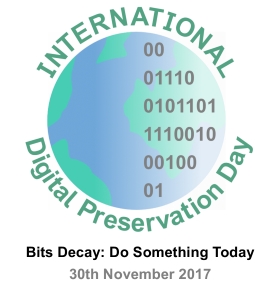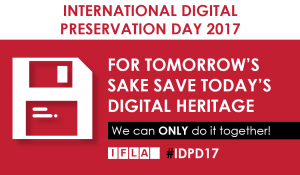The text adopted yesterday at the Council, after the Parliament’s vote on 26 March, comes after years of discussion.
The Commission’s proposal released in 2016 has been reviewed and voted upon in five parliamentary committees, at the plenary of the European Parliament, at several levels within the Council, and through trilogue discussions among the Council, the Parliament and the Commission.
IFLA and its partners have engaged in every step of the process to ensure the best results possible for our sector. There are also a number of very good analyses out there, not least those produced by our partner organisations.
This blog, rather than looking to give a comprehensive overview of the legislation, looks at the battles that libraries have, together, won, the bullets we have dodged, and the questions that remain. These last will be important, with the effort to ensure the right rules for libraries now moving to the national level. You can access the final agreed text here.
TEN BATTLES WON
First of all, the battles won – those areas where we have seen a significant improvement on the text originally proposed by the Commission in September 2016. Through the work of a number of committed Members of the European Parliament, and supportive Member States, there have been important steps forward in some key areas:
- Extension of the mandatory text and data mining (TDM) exception to all libraries and cultural heritage institutions (Article 3): originally, the Commission proposed that only research organisations could benefit. However, research libraries may have faced a lack of certainty, and other libraries and cultural heritage institutions would have been excluded, forced to seek licences in order to carry out analysis on the works they hold. Now they can.
- A second and broader mandatory TDM exception, applicable to any individual or institution (Article 4): the first version of the TDM provision created extensive uncertainty by trying to distinguish between types of mining which would and wouldn’t be allowed. The final version of the Directive makes TDM exceptions mandatory in all Member States, for all users with legal access, albeit with some smaller limitations. See below for more.
- Clarity on cross-border networks of collaboration for preservation (Recital 28): while the need for cultural heritage institutions to work across borders in order to make the most of digitisation equipment was mentioned in the original impact assessment, the first version of the Directive failed to make it clear that such networks were possible. Now it does.
- Application of contract override to preservation (Article 7(1)): libraries can be prevented from carrying out preservation activities when the terms of the licences under which works are accessed state otherwise. The original Directive did not address this issue. Now it does.
- A wider number of purposes acceptable under digitisation for preservation (Article 6, Recital 27): preservation does not only imply taking a copy of a particularly vulnerable work. Cataloguing, insuring and even lending to another institution for preservation work may also require copies to be made. Improvements to the Directive have offered a greater indication that these are possible under an exception, although libraries will need to work at the national level to ensure these are covered.
- A fall-back exception for out-of-commerce works where no collective management organisation exists for a specific category of work in a given country (Article 8(2)): the grand plan in the original Directive was to allow for extended collective licensing of out-of-commerce works? But what about the many sectors and countries where there isn’t a representative, well-governed collecting society to run this, or they don’t have the right mandates? Thanks to the new exception, libraries can now also find a way to digitise and make available works which aren’t available on the market.
- Stronger conditions on when a country can opt out of the education exception (Article 5(2)): the original proposal left a lot of scope for Member States to disapply the new education exception and allow licensing to prevail. However, it is clear that many educational licences are not fit for purpose. The final version of the Directive puts the onus on Member States to ensure that before an exception is taken away, licences have to offer a realistic solution.
- Protection of the public domain (Article 14): recent cases have seen actors take simple photos of works which have long been in the public domain and claim copyright. This can represent a barrier to their spread, as key texts and images risk being subject to infringement proceedings. The final version of the Directive makes it clear that straightforward reproductions of works in the public domain cannot themselves claim copyright.
- A clear possibility to have broader limitations and exceptions (Article 25): the tendency in international copyright law is to favour higher levels of protection of rights, rather than greater scope to pursue public interest goals through exceptions. However, in the final version of the Directive, it is made clear that Member States should feel able to go further if they want.
- Extension of education exception to uses by educators in other settings (Article 5(1)): the original version of the directive allowed for teachers to use digital works in the classroom, or online. This potentially restricts the ability of educators to offer courses in libraries and elsewhere. The final version of the Directive clarifies that this is possible under the exception (or licences if applicable).
10 BULLETS DODGED
In the course of the discussions, a number of ideas emerged which would have seriously limited the effect of the new rules, and indeed have created dangerous precedents both for Europe and the rest of the world. Fortunately, they didn’t stick:
- Obligation to delete datasets created for text and data mining (Article 3): a number of MEPs tried to argue that if copies of articles and other materials were made in machine-readable formats for text and data mining, these needed to be destroyed afterwards in order to prevent against misuse. This (once again) makes the lazy assumption that exceptions are more or less the same thing as piracy (wrong), and would have meant that experiments carried out with TDM could not be reproduced.
- Scientific publications in the scope of the new rights for online press publications (Article 2(4)): in one European Parliament committee, there was an to extend the new planned press publishers right extended to scientific publications. This did not make sense, given the very different market conditions there (not least the fact that authors are not paid for their work). Fortunately, MEPs saw sense and rejected this proposal.
- Continued over-protection of technological protection measures (Article 7(2)): the original Directive took the refreshing step of arguing that technological protection measures (TPMs) which prevent the enjoyment of exceptions (for example copying for preservation) should not themselves enjoy legal protection, even for licenced (as opposed to purchased) works. The European Parliament tried to reverse this, leaving any work accessed under licence potentially tied up in TPMs. This proposal did not make it to the final version.
- No possibility to cumulate exceptions and limitations (Article 7): a further effort sought to overturn the (highly restricted) TU Darmstadt ruling. This established that it is possible to combine exceptions, as long as these continue to respect the three-step test. Despite this obvious safeguard, rightholders tried to add in a new clause that would prevent ‘stacking’, but which would have at the same time had a huge impact on disciplines such as digital humanities. It didn’t make it.
- Automatic right for publishers to benefit from public lending right at the expense of authors (Article 16(2)): one often-overlooked article in the Directive served to protect collective management organisations who had been paying out shares of copying revenues to publishers. Following the Reprobel case in the Court of Justice of the European Union, they risked having to pay this money out to authors instead – the Directive therefore underlines that publishers can claim a share. There were efforts during the negotiation of the Directive to extend this to public lending right, which would have seen authors in a number of countries lose revenue to publishers. The final version leaves the choice to Member States.
- Library repositories being covered by new rules on platform liability (Article 2(6)): the first version of Article 13 (now 17) would have meant that any site hosting large volumes of user uploaded content would need to implement filters to check for infringement, or face liability. This would have placed a huge burden on scientific and open education repositories, which play a vital role in giving access to materials. Thanks to extensive work, there is now a clear exception for these, alongside sites such as Wikipedia.
- Libraries and individuals being obliged to pay for uses of short snippets of press publications (Article 15(1)): while clearly aimed at GoogleNews, the original version of the Directive gave very broad application to the Press Publishers Right, with non-commercial users such as libraries potentially liable to pay. This would have potentially had a major impact on research work done by librarians for users, as well as catalogues and libguides. Fortunately, the new Directive is clear that non-commercial users are not affected.
- Works can only be declared out of commerce when all versions, manifestations and translations are no longer on sale (Article 8(5)): the original version of the Directive indicated that a work could only come under the new provisions when all versions, manifestations and translations were no longer on sale. This would have seriously limited the impact of the Directive, given that different language versions are not necessarily interchangeable, and that researchers may well need a specific edition, and so cannot complete their work with a substitute that is still on sale.
- 20-Year duration for press publishers’ rights (Article 15(4)): the first version of the Directive gave press publishers a right for 20 years, despite any evidence of this being proportionate or justified. This would have seriously limited the work of libraries working with the press, as well as research into recent history. In the end, the duration of the right was limited to two years.
- Retroactive effect of the new press publishers’ right (Article 15(4): at first, a lack of clarity in the text could have implied that even existing publications would benefit from the new possibilities. This would have put into question work already done using this material, bringing major new uncertainty. The final version of the Directive is clear that there is no retroactive effect.
TEN OPEN QUESTIONS
As is almost always the case with European legislation, a lot comes down to transposition – the steps taken to turn EU rules into national ones. An added factor in this is the lack of precision in many parts of the Directive. This is inevitable, and offers opportunities to ensure positive outcomes. At the same time, it also means that libraries will need to play close attention.
Here are ten more things to watch out for:
- Rules around permissible security measures in text and data mining (Article 3(3)): the Directive underlines that rightholders are allowed to take security measures in order to protect their works. At the same time, this should not lead to the cancelling out of the TDM exception in the first place. Finding the right balance here – and preventing overly restrictive approaches – will be important if the exception is to have its full effect.
- Rules around opting out of text and data mining for all individuals and institutions (Article 4(3)): as highlighted above, a major step forwards was the mandatory TDM exception for the benefit of people and organisations outside of research centres, libraries and cultural heritage institutions (if they have legal access to the works mined). There is a catch here, in that rightholders can explicitly state that they do not want their works mined. It will be important to work with Member States to ensure that the rules around this are specific enough to mean that opting out is the exception, not the rule.
- Definition of who can benefit from the education exception (Recital 20): despite our efforts, the education exception formally still only applies to educational establishments, although it can be used (under the authority of a formal education institution) in libraries and cultural heritage institutions. There is, nonetheless, a possibility to ensure that libraries (or groups that offer training and support to people in libraries) are recognised as educational establishments in national law. This would open up useful new possibilities for libraries to fulfil their potential as places for learning.
- Application of the opt-out from the education exception (Article 5(2)): as highlighted above, there is the possibility for Member States to decide that the new education exception does not apply in situations where there are licences adapted for educational uses on offer. There is likely to be extensive rightholder lobbying in favour of excluding broad categories of works from the exception. It will be up to libraries and educators to ensure that the conditions laid down by the Directive (that licences are ‘suitable’, ‘cover the needs and specificities of educational establishments’ and are ‘easily available’) are fulfilled.
- Application of the exceptions in the out of commerce works exception (Article 8(3)): a major area for work will be how to define where cultural heritage institutions need to ask for licences, and where they can benefit from the exception in order to digitise and make available out-of-commerce works. It will be up to member states to decide what it means for a collective management organisation to be ‘sufficiently representative of rightholders in the relevant type of works or other subject matter and of the rights that are the subject of the licence’.
- Application of rules to out-of-commerce works by third country nationals (Article 8(7)): one weakness of the Directive is the focus on trying to ensure that works by people from outside the European Union are not covered by new rules on out of commerce works. For many European countries, this will be difficult, given that they use major world languages, and so telling the difference between a French and a Quebecois work, for example, may be difficult. Member States will need to take a sensible approach to this point.
- Application of the definition of a good faith search on whether a work is in commerce (Article 8(5)): the Directive suggests that before a work can be declared out-of-commerce, a ‘reasonable effort’ must be made to ensure that it is not available to the public through normal commercial channels. Given the difficulties already encountered around the Orphan Works Directive, it will be important to ensure that national implementation does not create disproportionate obligations on cultural heritage institutions.
- Definition of which works can be preserved under the preservation exception and of the activities and purposes covered (Article 6, Recital 27): the Directive’s preservation exception, as set out above, does allow for copying for preservation purposes, while leaving the possibility for Member States to pass other exceptions and limitations for internal uses. There is, therefore, a key opportunity to ask for exceptions that allow for any core library uses of works to be covered.
- Management of the dialogues planned for the text and data mining exception, the out of commerce works provisions and the upload filters provision (Articles 3(4), 11, 17(10)): a number of articles provide for dialogues between stakeholders on how the rules should be applied. It will be necessary to pay attention to the composition, terms of reference and other aspects of these discussions in order to ensure that the results reflect the interest of libraries and their users. This will, in particular, be the case around protection of freedom of expression under the provisions on platform liability.
- Protecting the quotation exception (Article 15): The press publishers’ right creates a worrying precedent for protection being given to ‘short extracts of a work’. This risks affecting how legislators and courts think of the concept of quotation in general, as well as criticism and review. While the scope of the Article in the Directive is narrow, the precedent is certainly worrying.
For more, see our resources page about the European reforms. You can also see analysis and reaction by our partner organisations:
LIBER: New European Copyright Directive: A Detailed Look
EBLIDA: Long Read : Final stretch for the Digital Single Market Directive
SPARC Europe: A new Copyright Legislation for Europe. How will this impact Open Access?
EUA: EU Copyright Directive: EUA cautious about adopted agreement
 The European Parliament’s vote on the draft copyright directive next Wednesday is likely to be the last chance for transparent discussion on the substance of a reform that has been years in the making. It is also a last chance for libraries to reach out to and influence Members of the European Parliament.
The European Parliament’s vote on the draft copyright directive next Wednesday is likely to be the last chance for transparent discussion on the substance of a reform that has been years in the making. It is also a last chance for libraries to reach out to and influence Members of the European Parliament.




 This year the first ever
This year the first ever 
